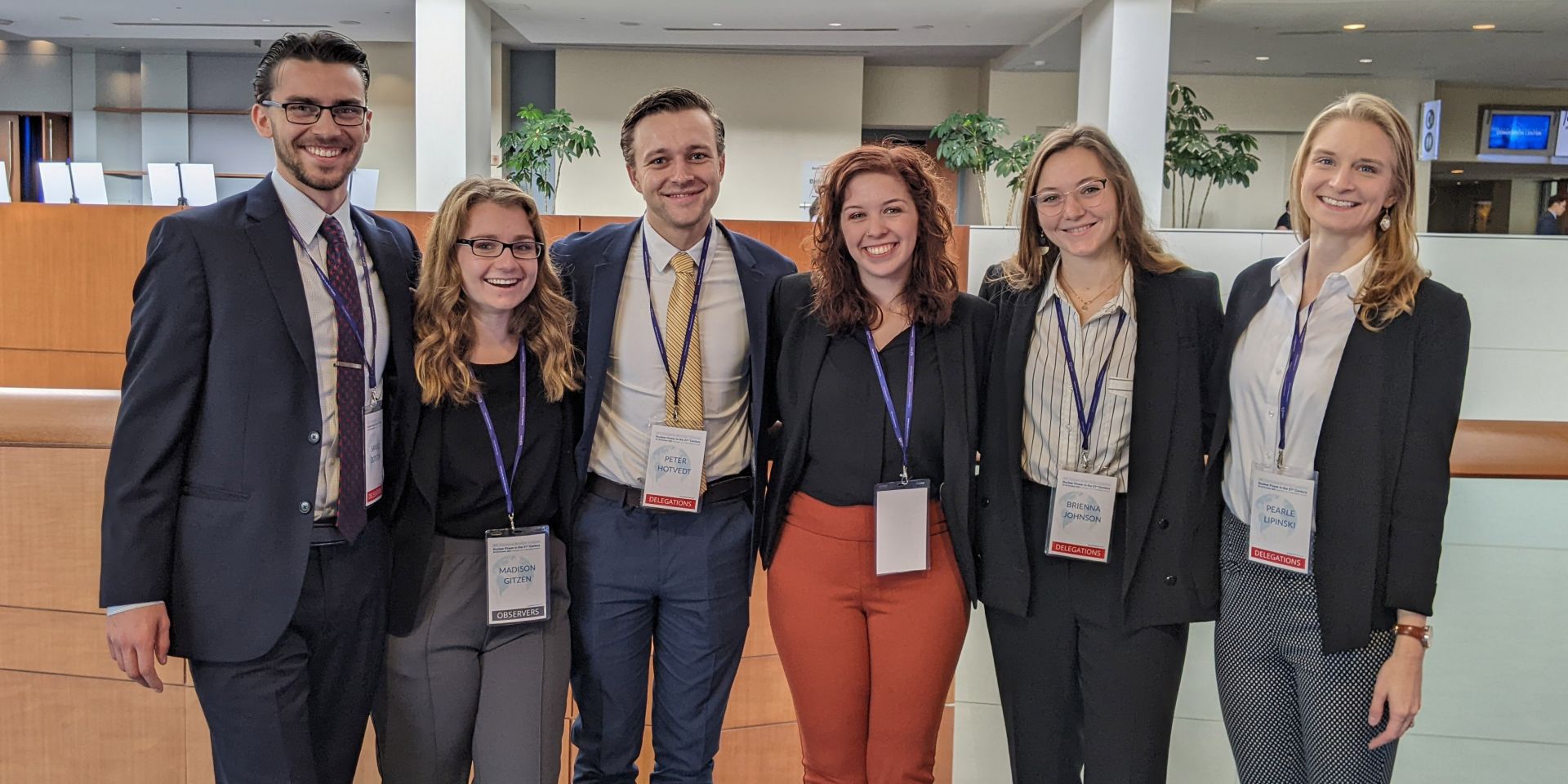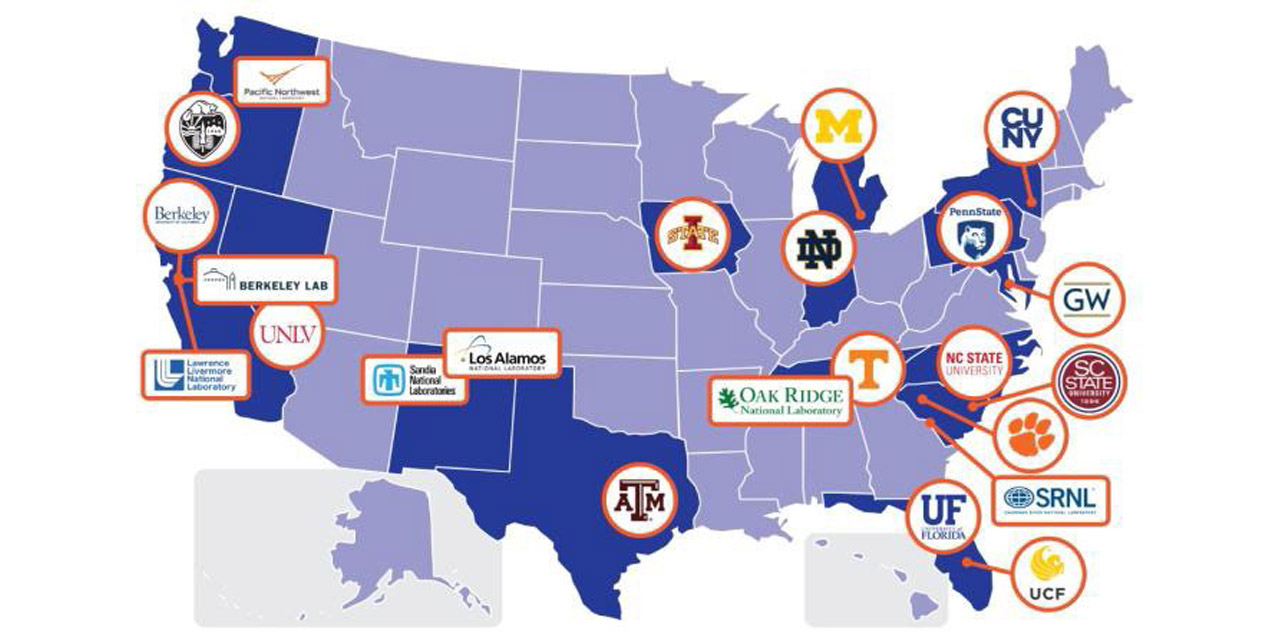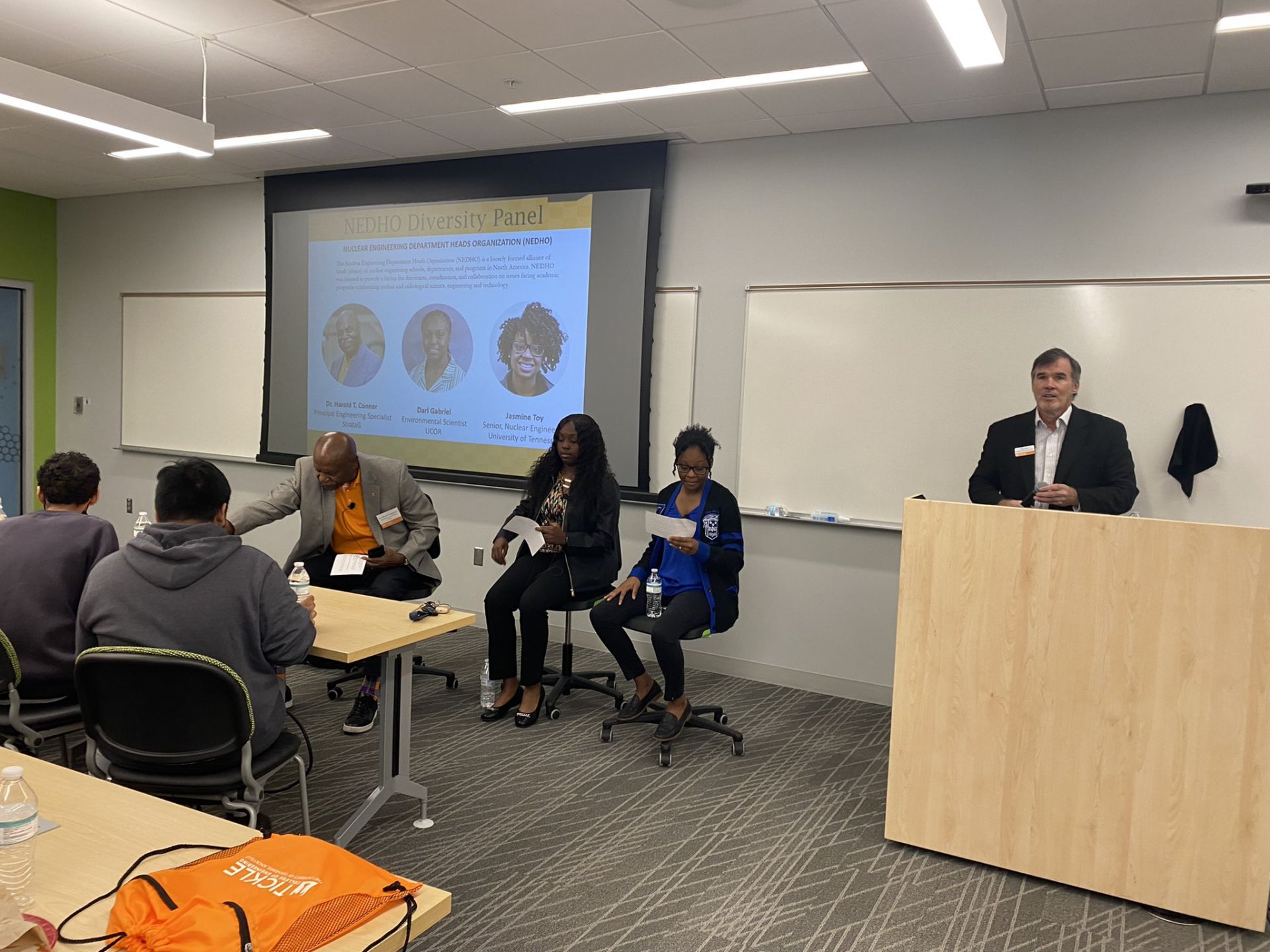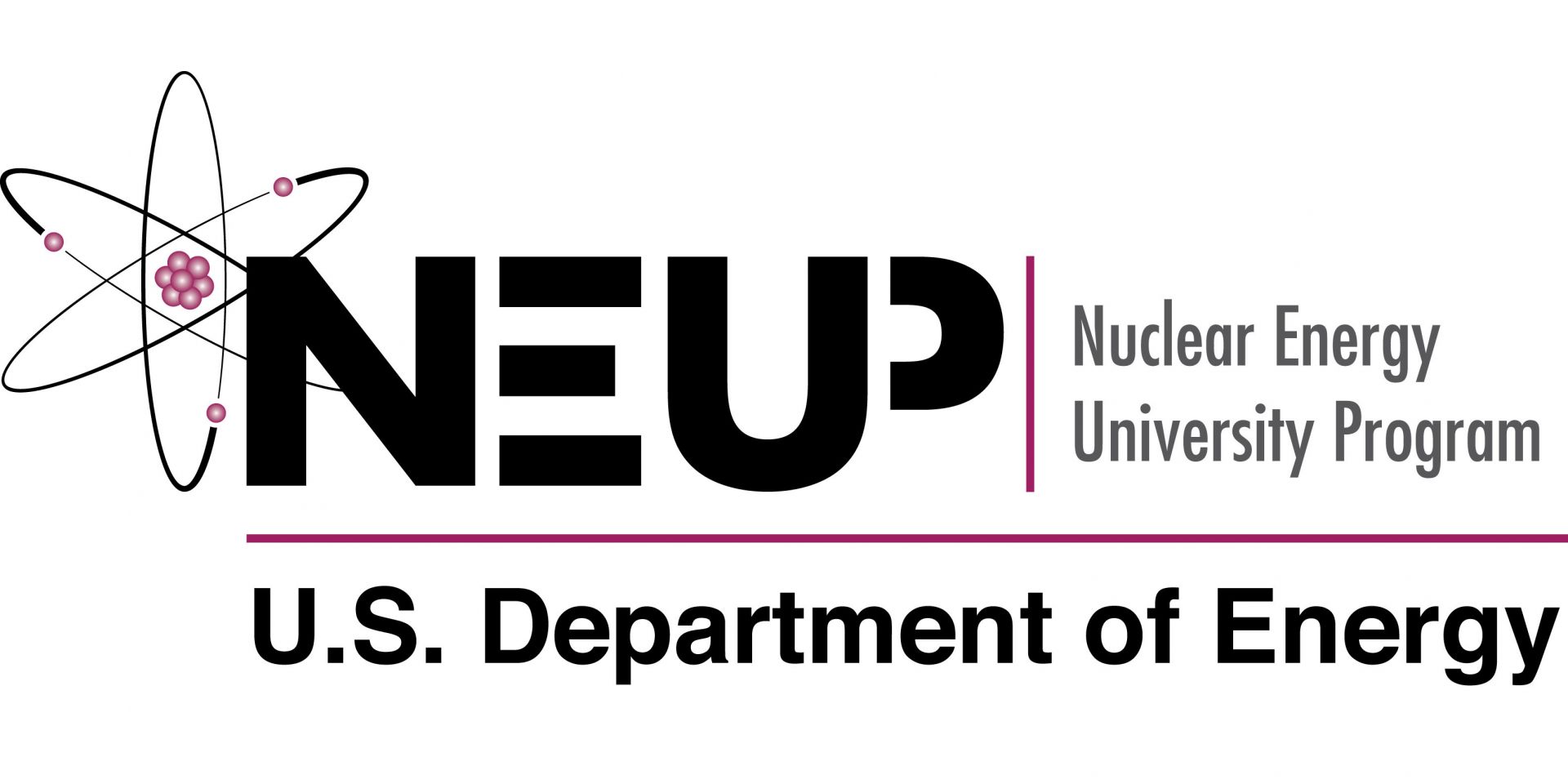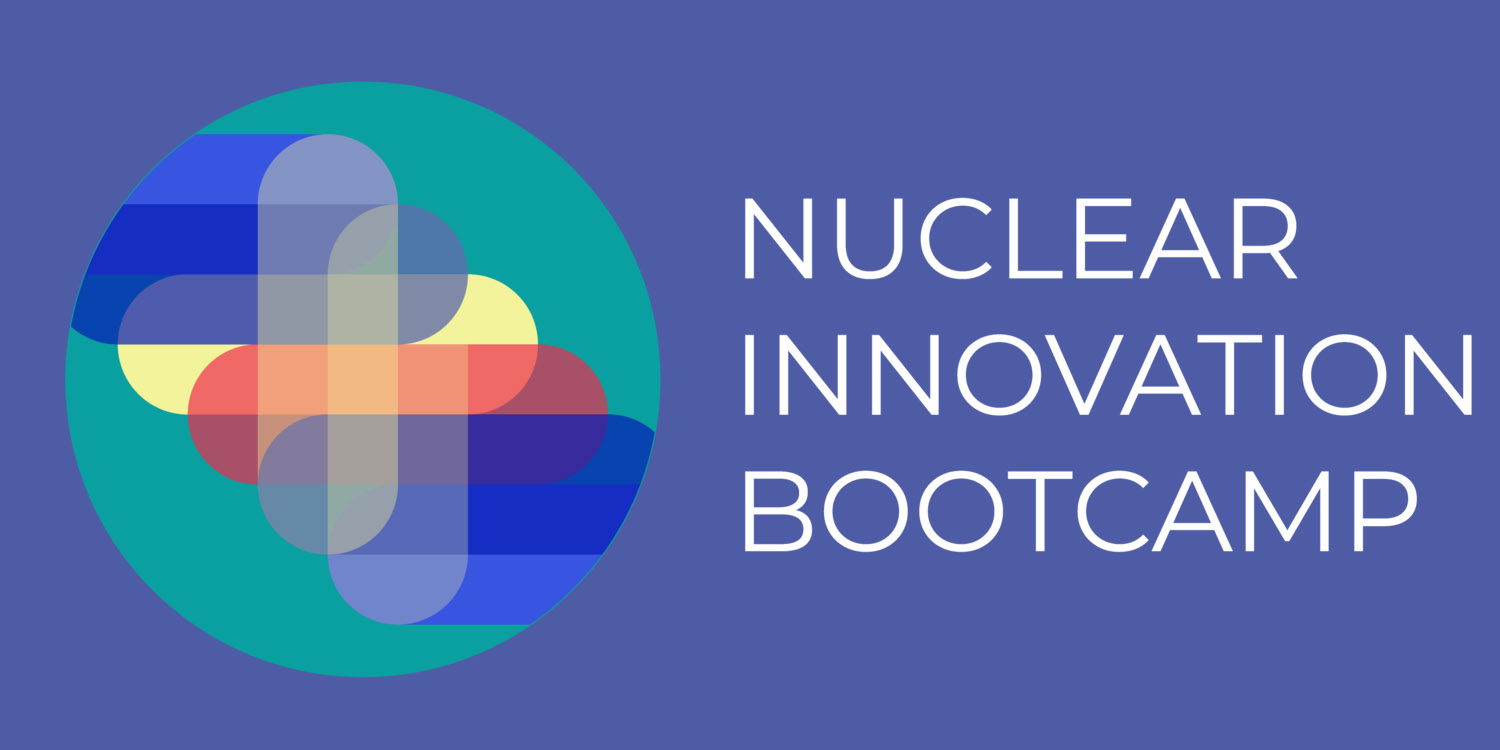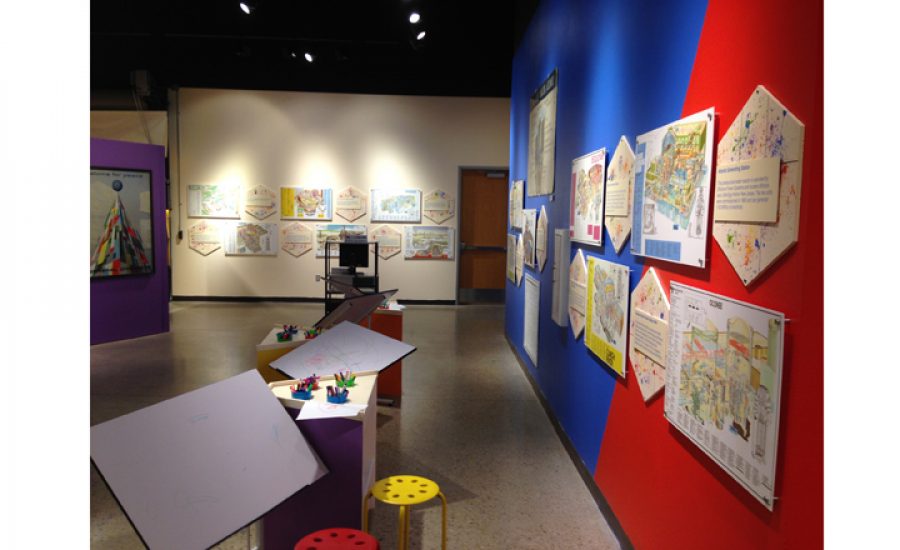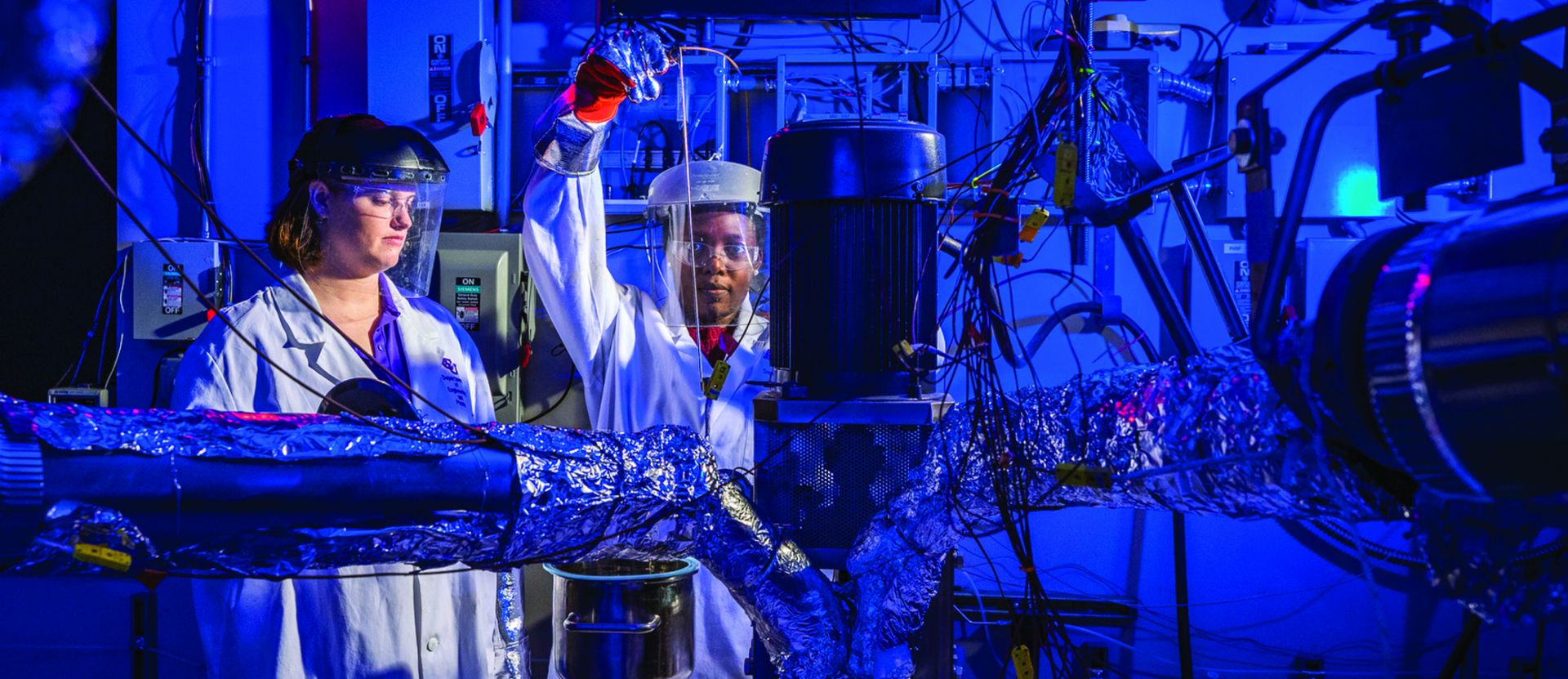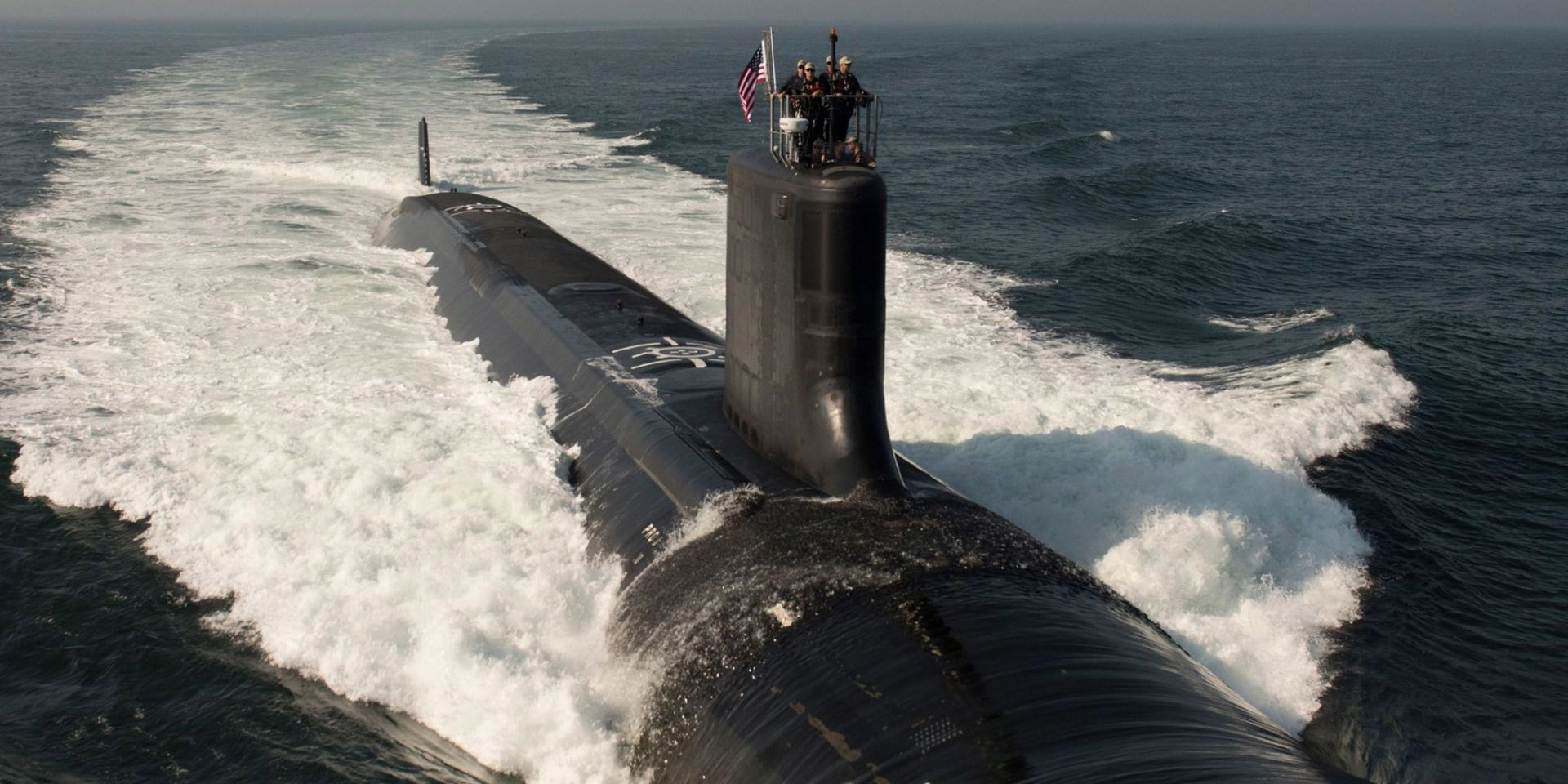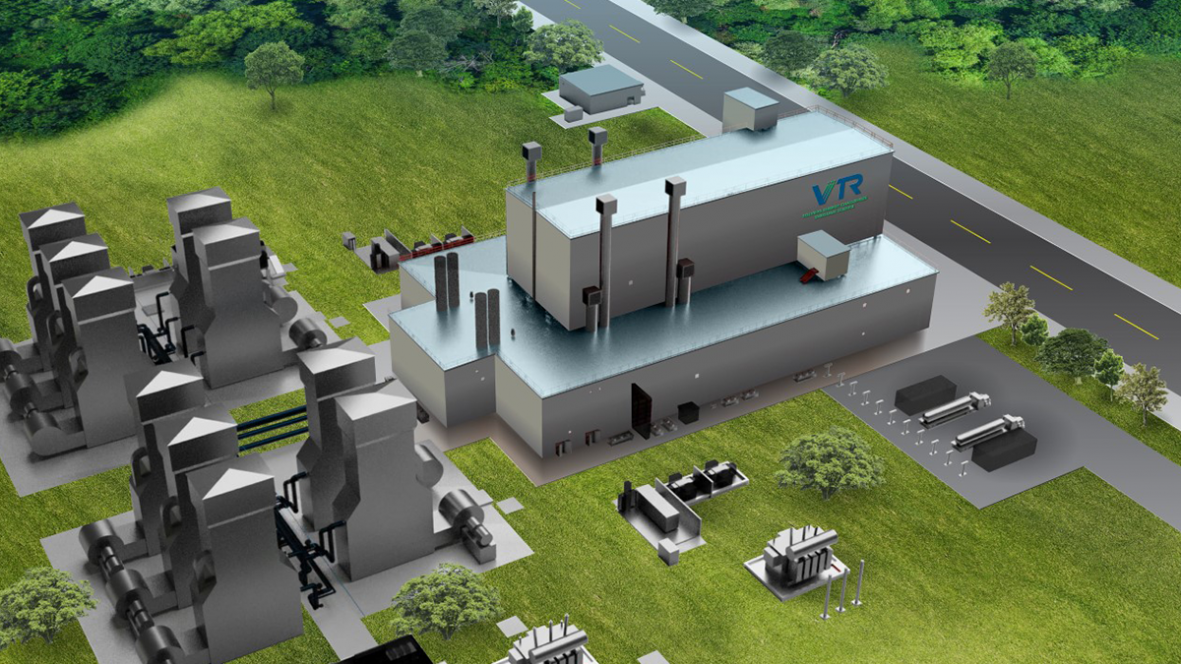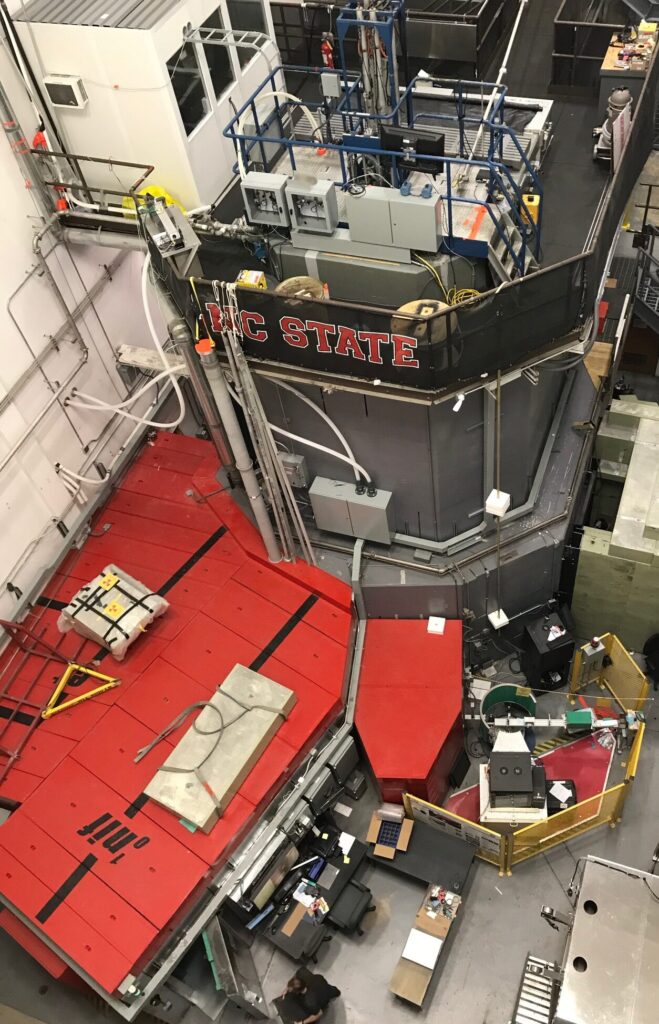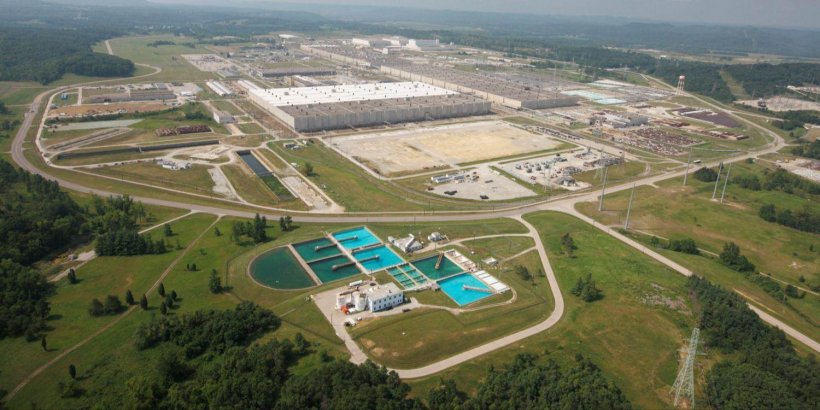The student social media ambassadors at the IAEA Nuclear Power Ministerial in October 2022 (left to right): Sam Dotson from the University of Illinois, Madison Gitzen from Pennsylvania State University, Peter Hotvedt from the University of Michigan, Jillian Newmyer from Oregon State University, Brienna Johnson from the University of Wisconsin–Madison, and Pearle Lipinski from Ohio State University.
Pearle Lipinski is a nuclear engineering Ph.D. student in Ohio State University’s Department of Mechanical and Aerospace Engineering (MAE). In October 2022, at the International Atomic Energy Agency’s fifth International Ministerial Conference on Nuclear Power in the 21st Century (also known as the Nuclear Power Ministerial, or NPM), she acted as a student social media ambassador, where she was a “huge success in getting the word out,” according to Lei Raymond Cao, director of the OSU nuclear engineering program.
Members of the Consortium for Nuclear Forensics. (Image: University of Florida)
A 16-university team of 31 scientists and engineers, under the title Consortium for Nuclear Forensics and led by the University of Florida, has been selected by the Department of Energy’s National Nuclear Security Administration (NNSA) to develop the next generation of new technologies and insights in nuclear forensics.
Wes Hines (right), of the University of Tennessee’s Department of Nuclear Engineering, introduces the speakers for a session on nuclear engineering opportunities. (Photos: University of Tennessee)
The University of Tennessee–Knoxville Department of Nuclear Engineering hosted the inaugural Nuclear Engineering Department Heads Organization (NEDHO) Diversity Panel on October 27. Wes Hines, head of the university’s Department of Nuclear Engineering, was the moderator for the event. Invited to the speak were engineering professional Harold T. Conner, environmental scientist Dari Gabriel, and engineering student Jasmine Toy. These three panelists discussed overcoming challenges in their engineering education and/or careers to find success. A common theme that emerged from the conversation was that—in addition to their own determination to succeed—all three panelists benefited from caring adult guidance during their youth, as well as strong support from friends, family, and colleagues as they pursued their goals.
A room full of displays at the Art of the Reactor exhibit. (Photo: IIT)
Nuclear power plant cooling towers are easily recognizable for their familiar hyperboloid shape. But an art exhibit running at the Illinois Institute of Technology in Chicago aims to give visitors a different perspective.
The Art of the Reactor, an exhibit by the National Museum of Nuclear Science and History and hosted by IIT’s Lewis College of Science and Letters, opened on November 4 and runs until Sunday, December 4 at Hermann Hall on the IIT campus.
The molten salt test loop at ACU’s NEXT Lab. (Photo: Jeremy Enlow/SteelShutter)
The Nuclear Regulatory Commission has announced that it will review a construction permit submitted by the Nuclear Energy eXperimental Testing (NEXT) Laboratory at Abilene Christian University for the lab’s planned molten salt research reactor (MSRR). The NRC informed Rusty Towell, director of the NEXT Lab and professor in ACU’s Department of Engineering and Physics, about its acceptance of the construction permit review in a November 18 letter. The NEXT Lab had submitted the construction permit application on August 15; it was the first-ever university application for an advanced research reactor. On October 14, they provided the NRC with additional information about instrumentation and controls. (Nuclear News featured an article about the NEXT Lab and the MSRR in the November issue.)
Research engineers take a sample of molten salt for the NEXT Lab. (Photo: Jeremy Enlow/Steelshutter)
The Nuclear Energy eXperimental Testing (NEXT) Laboratory at Abilene Christian University in Texas created quite a bit of buzz within the nuclear community in August when it submitted the first application for a new U.S. research reactor in more than 30 years. The construction permit application submitted to the Nuclear Regulatory Commission is for a molten salt research reactor (MSRR)—the first-ever university application for an advanced research reactor. Assuming NRC acceptance of the application, which could happen this year, a formal technical review of the lab’s MSRR plan will then begin, and construction of the MSRR could be completed by 2025. The Abilene campus’s new Science and Engineering Research Center—a 28,000-square-foot multiuse facility for chemistry, physics, and engineering research and education—is expected to be completed by July 2023 and will house the advanced reactor. The final step is to obtain the NRC operating license for the MSRR and commence operation.
The USS Rickover (SSN 795). (Photo: USS Hyman G. Rickover Commissioning Committee)
NBC Chicago featured a story last week about a visit to the Windy City by the commander and crew of the USS Hyman G. Rickover (SSN-795), the navy’s newest nuclear submarine. The submarine was christened in July 2021 and is currently undergoing trials out of Naval Submarine Base New London in Groton, Conn., before its expected commissioning in 2023. Reporter Charlie Wojciechowski described the sailors’ meetings with students from Chicago’s Rickover Naval Academy, along with the sailors’ visits to the Museum of Science and Industry and other city landmarks. He also interviewed Commander Matthew H. Beach.
A rendering of the Versatile Test Reactor site. Image: INL
LA GRANGE PARK, Illinois – Idaho National Laboratory’s crucial Versatile Test Reactor (VTR) project is the focus of a newly released special issue of Nuclear Science and Engineering, the first and oldest peer-reviewed journal in its field. This special issue of the American Nuclear Society’s flagship journal presents a current snapshot of the nuclear innovation project at INL, which is being developed in partnership among six national labs and a host of industry and university partners.
The Portsmouth Gaseous Diffusion Plant. (Photo: DOE)
The Department of Energy’s Office of Environmental Management has renewed a $2.5 million grant to Ohio University to support community redevelopment around the DOE’s Portsmouth Site. Since 2016, the DOE has provided a total of $8.2 million to the university for work with the communities.
The DOE grant, which began on October 1, will be administered over five years through September 30, 2027. A previous grant expired on September 30.
